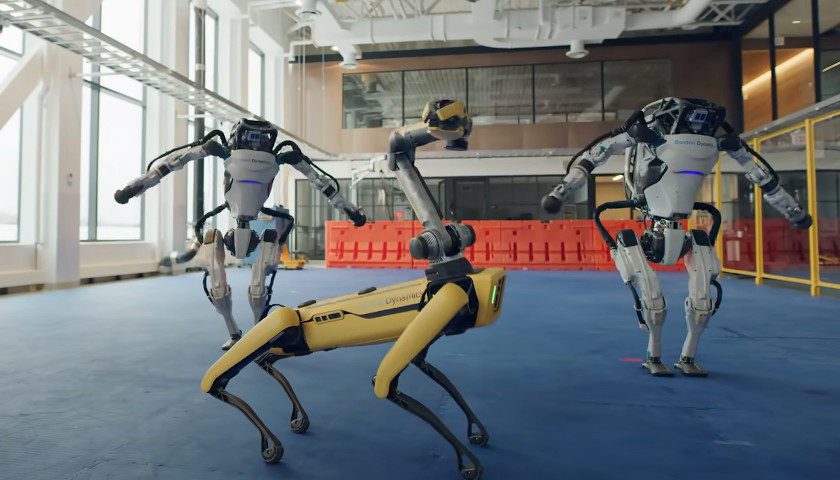Faculty and students at Virginia Tech are putting robot dogs in construction sites testing automated monitoring of construction progress. The dogs are Boston Dynamics’ internet-viral yellow-and-black four-legged Spot robots, and researchers are using them to take thousands of 360-degree pictures to document construction sites. Initial findings from the team identify safety risks and operational challenges, but also identify opportunity with the time-saving automation.
“Obtaining construction status photos to ensure accountability and construction accuracy is a daily task,” a Virginia Tech representative told The Virginia Star.
Using the robot to capture the 360-degree images allows people who would normally perform the inspections to work on other tasks.
“In spaces that are small or hard-to-access either geographically, or because they could present a safety concern, this technology is very handy. It is also very handy for use by organizations that operate many construction sites,” the representative said.
According to principal investigator Kereshmeh Afsari, human operators still need to perform post processing and analysis of the images. Afsari is an Assistant Professor at the Virginia Tech Myers-Lawson School of Construction, which is partnering with the school’s Division of Campus Planning, Infrastructure, and Facilities along with sponsor Procon Consulting, according to a Virginia Tech article.
“We conducted an experiment in the real–world construction site of Student Athlete Performance Center with 10,800 [square feet] new construction on [the Virginia Tech] campus in Blacksburg,” Afsari and other researchers wrote in a paper of their initial findings.
The paper notes that legged robots are useful for traversing rough terrain — Spot can walk up stairs. It can also follow way points, enabling it to follow the same path every time. A human performing the same construction monitoring task must walk through a job site, mark the location on the job site floor plan, and then take the 360-degree image, which must be uploaded through Wi-Fi.
“SpotWalk in fact allows a Spot robot to perform image capture to replace the human operator in this procedure and to automate the data collection process,” the paper states.
But the paper also describes limitations. The robot can slip or lose balance, its object detection system can’t predict trajectories of moving objects, and it can’t detect glass or clear objects, among other challenges. It also requires a human operator to follow it. Safety guidelines require the robot to be 6.5 feet away from people, and the operator must stop the robot if there’s a hazard of a collision.
“Rapidly changing construction environments caused potential hazards of Spot colliding with workers or damaging equipment thus, the E–Stop needed to be deployed three times,” the paper states. “Despite safety measures built into the design of legged robots, they still pose significant risks to construction workers. The robot also presents risks to the environment it is functioning in.”
According to the Virginia Tech article, the team is halfway through its yearlong study.
In the article, Afsari said, “The goal of this study is to look at the feasibility of robots on active construction sites and assess any challenges. Job sites are extremely dynamic environments, presenting evolving human and physical navigation barriers for robots. There is a need for further exploration around operations limits for autonomous robots to boost effectiveness and safety by implementing sensors and other controls.”
– – –
Eric Burk is a reporter at The Virginia Star and the Star News Digital Network. Email tips to [email protected].




